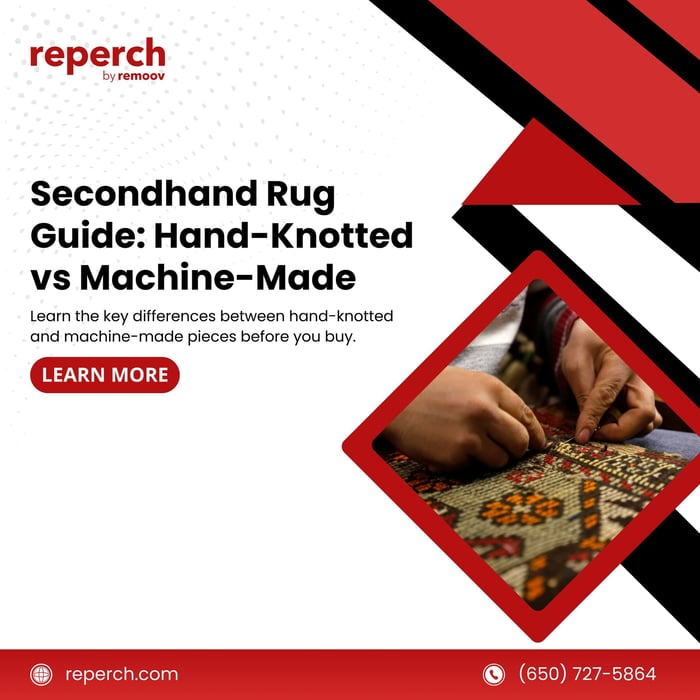Secondhand furniture is a smart and sustainable choice for your home, but sometimes those beautiful vintage or gently used pieces come with an unwelcome guest: lingering odors. Whether it's a musty dresser, a couch with a smoky scent, or a cabinet that smells like old storage, unpleasant smells can ruin an otherwise perfect find.
In this guide, we’ll walk you through safe, effective, and easy ways to remove odors from secondhand furniture without damaging the materials. From natural deodorizers to professional cleaning strategies, you’ll learn exactly what to do to give your furniture a fresh start.
Common Causes of Furniture Odors
Before you start cleaning, it helps to know what you’re up against. Odors in used furniture typically come from:
Moisture and mold trapped in wood or upholstery
Pet accidents or lingering dander
Smoke from previous owners
Food spills that seeped into cushions or cracks
Long-term storage in basements or garages without ventilation
Identifying the source of the odor will help you choose the right solution.
Step 1: Inspect the Furniture
Start by checking the materials involved:
Wood pieces may have absorbed moisture or mildew
Upholstered furniture can trap odors in fabric and foam
Drawers and cabinets might have hidden smells deep inside
Open drawers, lift cushions, and look for signs of stains, moisture, or discoloration. Use your nose to identify which areas need the most attention.
Step 2: Vacuum and Wipe Down
Give your furniture a thorough initial cleaning:
Use a HEPA-filter vacuum to remove dust, pet hair, and loose debris
Wipe wooden surfaces with a soft cloth and mild soap solution
For upholstered areas, use a lint roller or vacuum upholstery attachment
This first pass often reduces the odor and reveals what deeper cleaning is still needed.
Step 3: Use Baking Soda for Fabric and Drawers
Baking soda is one of the safest and most effective odor neutralizers.
Sprinkle it generously over cushions or inside drawers
Let it sit for 8 to 12 hours
Vacuum or wipe it up thoroughly
Repeat as needed for stubborn smells. This method works well for general musty odors, pet dander, and minor mildew.
Step 4: Try a Vinegar Spray Solution
For deeper odors, white vinegar helps kill mold and neutralize strong smells.
Mix equal parts white vinegar and water in a spray bottle
Lightly mist wood or fabric (do not soak)
Let it air dry in a well-ventilated space
Do a spot test first to avoid damage, especially on delicate upholstery or finished wood.
Step 5: Place in Direct Sunlight
Sunlight is a natural disinfectant and odor remover. If weather permits:
Set your furniture outdoors in a sunny, dry location
Let it sit for a few hours (up to a full day)
Rotate as needed to expose all sides
Avoid prolonged exposure if your piece has delicate finishes or dark fabric that could fade.
Step 6: Use Activated Charcoal for Hidden Odors
For enclosed areas like drawers, cabinets, or under cushions:
Place activated charcoal pouches or bowls inside
Leave them in place for 2 to 3 days
Replace or refresh the charcoal as needed
Charcoal absorbs moisture and smells without masking them. It’s especially good for removing mildew or chemical odors.
Step 7: Essential Oils for a Fresh Finish
Once the odors are gone, you can use essential oils to leave behind a clean scent.
Add a few drops of lavender, lemon, or eucalyptus oil to a water spray bottle
Lightly mist upholstery or wood surfaces
Avoid direct application or overuse
This final touch is optional but helps your furniture feel brand new.
Extra Tips for Wood Furniture
If the smell is still trapped in wood:
Seal the piece with a clear varnish, shellac, or paint primer
Focus on interior surfaces like drawer bases or backs of cabinets
Consider products like KILZ primer designed to seal in stains and smells
Always use safe products and follow manufacturer instructions.
Avoiding Odors in the Future
Once your piece is fresh, keep it that way by following these habits:
Regular Cleaning
Vacuum upholstery once a week
Wipe down wood monthly with a dry or slightly damp cloth
Check hidden areas for dust and moisture
Manage Humidity
Use a dehumidifier if you live in a damp climate
Keep furniture out of basements or closed storage for long periods
Use furniture pads to elevate from the floor
Keep Pets and Smoke Away
If you smoke, do so outside
Use washable furniture covers for pet-friendly pieces
Clean up pet accidents immediately
When to Seek Professional Help
If the smell persists after multiple attempts:
Hire a professional upholstery cleaner
Consider ozone treatment from a cleaning specialist
Evaluate if internal foam or stuffing needs to be replaced
These options come at a higher cost but can rescue a valuable or sentimental piece.
Final Thoughts
Secondhand furniture can bring charm, character, and sustainability into your home, but unwanted odors are a common challenge. With a few careful steps, most smells can be removed safely and naturally, restoring the piece to its full potential.
At Reperch, we’re proud to offer pre-owned furniture that’s not only stylish and affordable but thoroughly cleaned and quality-checked. Each item is carefully inspected to ensure it’s ready for a second life in your space odor-free and full of potential.








